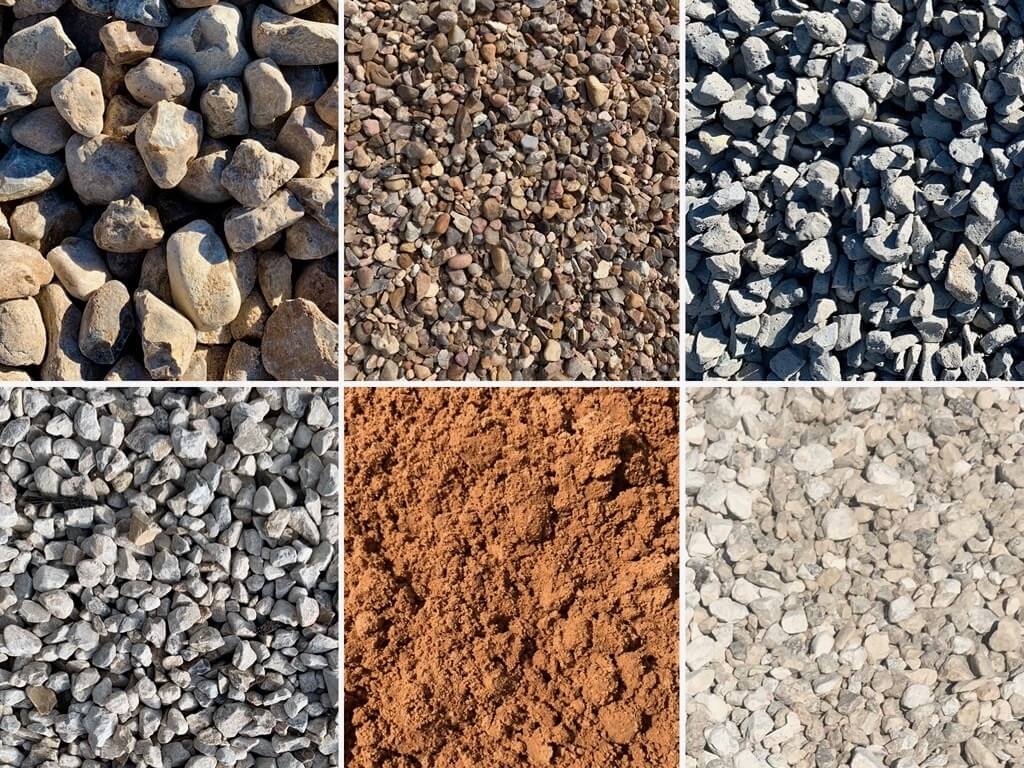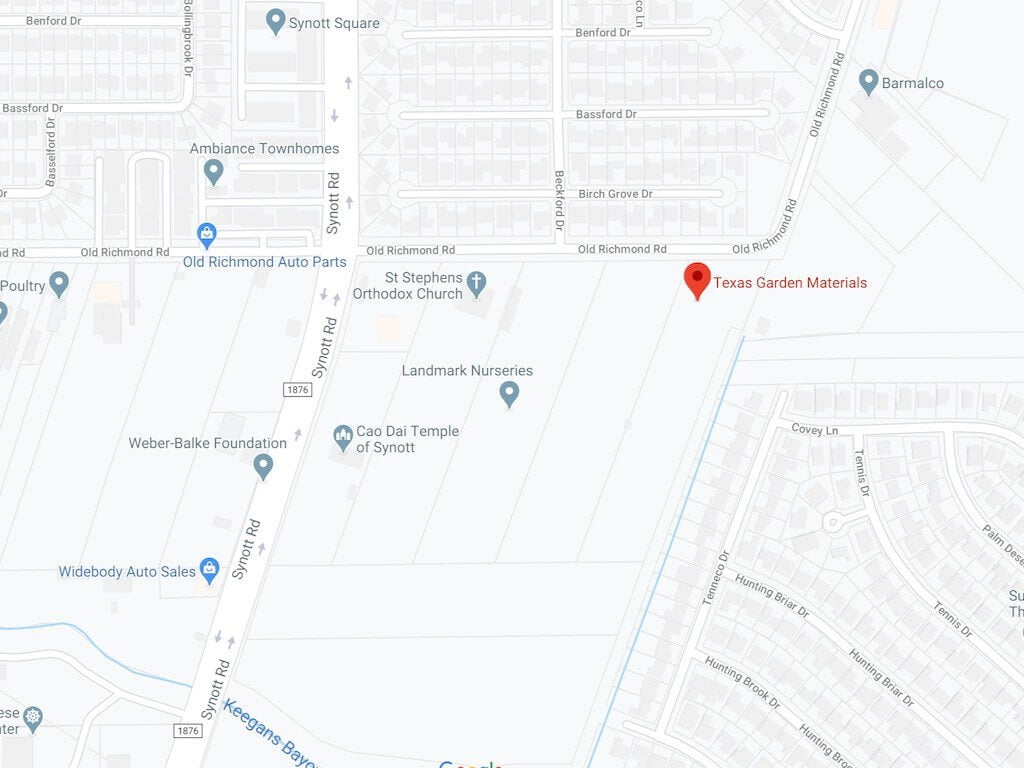French Drain: A Complete Breakdown
TGM is a reputable provider of landscape design and water management solutions. With years of experience, we specialize in offering professional installation services for French drains. Our French drains use perforated pipes surrounded by gravel and are highly effective in areas with heavy rainfall or poor soil drainage. By investing in a French drain, you can protect your property from water damage and enhance your landscaping.
If you are looking to maintain a beautiful and safe outdoor space, don’t hesitate to contact TGM today.
Understanding Drainage Problems
Poor drainage can wreak havoc on your property. Waterlogged lawns and basement floods can cause significant damage and threaten your home’s structural integrity. Understanding the causes of drainage problems is essential in finding the right solution.
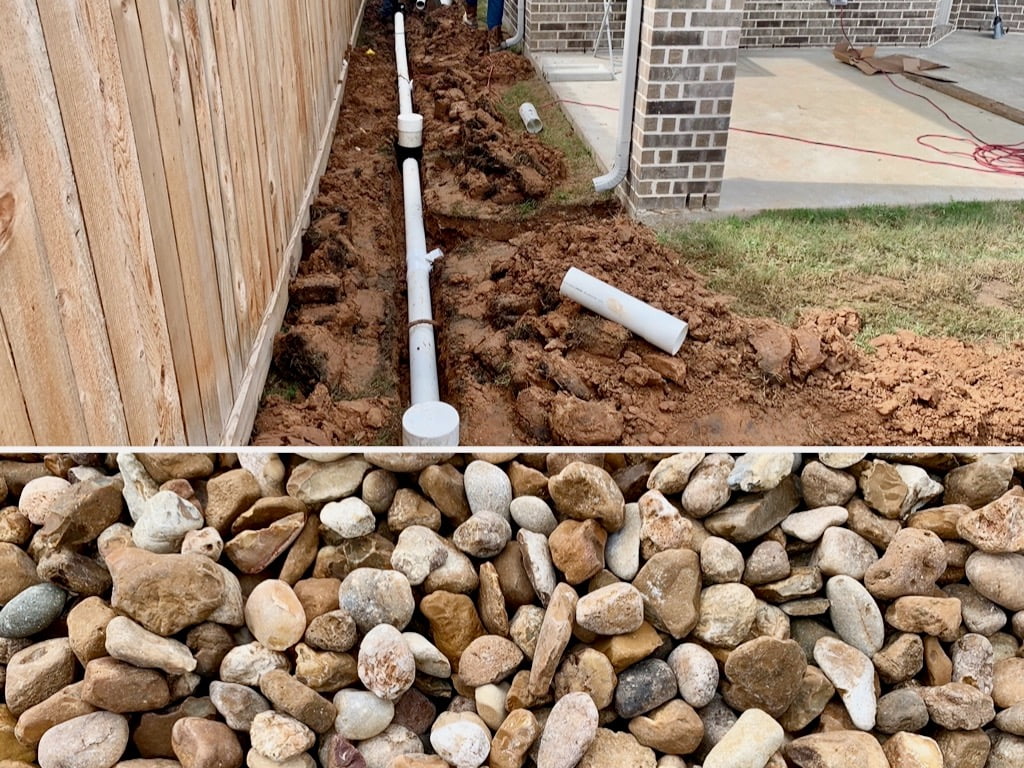
Drainage issues can arise from various factors, such as heavy rainfall, inadequate slope, compacted soil, or a high water table. When water cannot correctly drain away, it accumulates, leading to soggy areas, erosion, and even foundation damage. Identifying the underlying cause of your drainage problem is crucial to determine the most effective solution.
Assessing the landscape and observing the patterns of water accumulation will provide valuable insights into the severity and scope of the issue. Once you understand the problem, you can implement a French drain system.
What is a French drain?
A French drain, a weeping tile or sub-surface drain, is a trench filled with gravel or rock and contains a perforated pipe. Its purpose is to collect and redirect groundwater away from your property, ensuring it doesn’t accumulate in undesired areas.
The concept of a French drain dates back to the early 19th century when Henry French, a Massachusetts farmer, invented it. French recognized the need for an effective drainage solution to combat water accumulation in agricultural fields. Today, the French drain system is widely used in residential and commercial settings to tackle drainage problems.
Assessing Your Drainage Needs
Before diving into the installation process of a French drain, it’s crucial to assess your drainage needs and plan accordingly. Here are some critical steps to take when evaluating your drainage requirements.
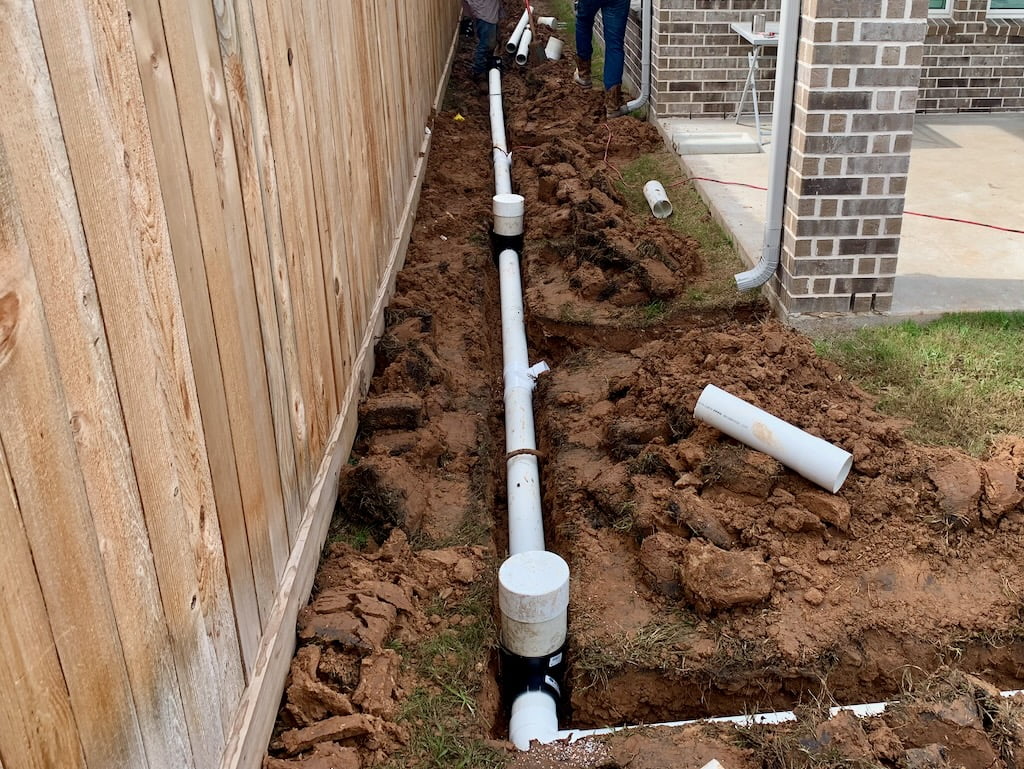


1. Identify Problem Areas: Walk around your property after heavy rainfall or during periods of excessive watering. Observe areas where water accumulates or fails to drain correctly. Note any signs of water damage, such as soggy ground, standing water, or erosion.
2. Determine Water Source: Understanding the source of excess water is essential in designing an effective French drain system. Assess whether the water comes from surface runoff, groundwater, or both. This information will help you determine the French drain’s depth, length, and configuration.
3. Evaluate Slope and Soil: Assess the slope of your property to determine the direction in which water naturally flows. Additionally, evaluate the soil composition and its drainage capabilities. Different soil types, such as clay or sandy soil, have varying drainage characteristics that must be considered when designing the French drain.
4. Consider Local Regulations: Before proceeding with the installation, check with your local authorities regarding any regulations or permits required for installing a French drain. Some areas may have specific guidelines or restrictions, especially if you plan to discharge water into a storm drainage system or natural watercourse.
Designing and Planning Your French Drain System
Once you have assessed your drainage needs, it’s time to design and plan your French drain system. Proper planning is crucial to ensure the effectiveness and longevity of the system. Here are the key steps to consider during the design phase.
1. Determine Drainage Area: Calculate the total area that needs drainage and determine the volume of water that needs to be managed. This information will help you determine the size and capacity of the French drain system.
2. Choose the Right Pipe Material: Select the appropriate pipe material based on your requirements. PVC pipes are commonly used due to their durability and resistance to corrosion. Flexible corrugated plastic pipes are also popular, especially in areas with freezing temperatures or soil movement.
3. Decide on Drainage Configuration: Based on your assessment of problem areas and water sources, determine the most suitable configuration for your French drain system. This could include a simple single trench drain, a perimeter drain around the property, or a combination of multiple drains to address specific areas.
4. Calculate Pipe Slope: The slope of the pipe is crucial for proper water flow. Calculate the required pipe slope based on the water volume and the drain length. Generally, a minimum slope of 1% is recommended for efficient drainage.
5. Plan Discharge Point: Determine where the water will be discharged once it exits the French drain system. This could be a designated drainage area, a dry well, or a storm drainage system. Ensure the discharge point is away from your property and doesn’t cause further drainage issues.
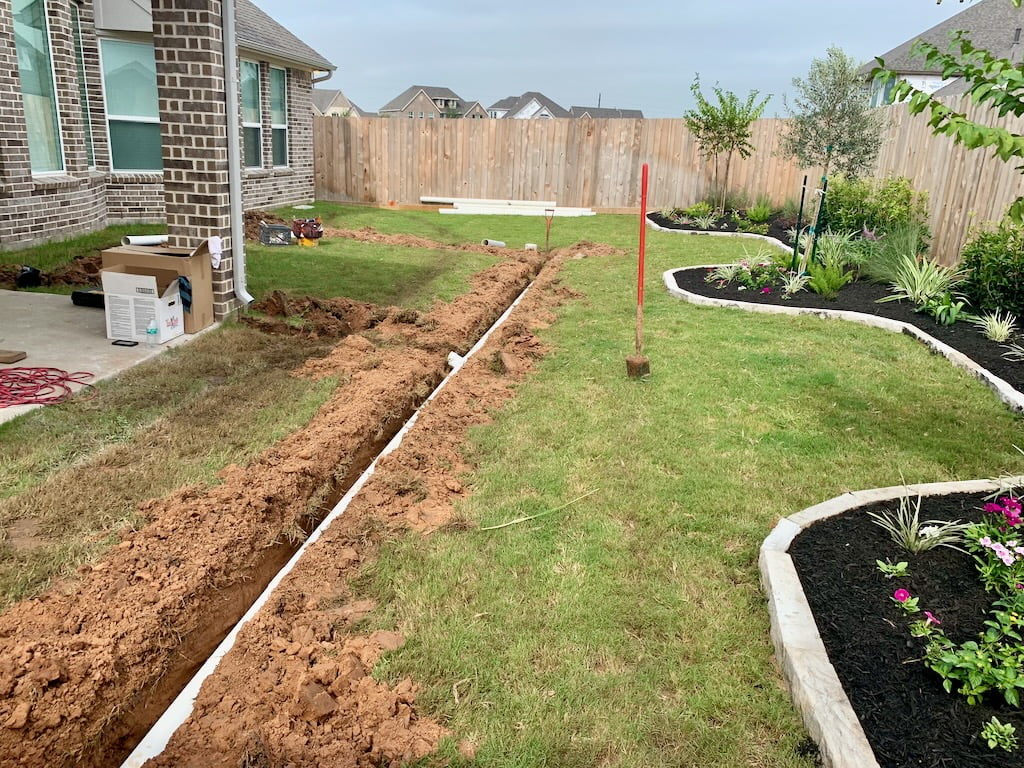


Installing a French Drain
Proper installation is critical to the performance and longevity of your French drain system. While it’s possible to install a French drain yourself, it’s recommended to hire a professional for complex or large-scale projects. Here’s an overview of the installation process.
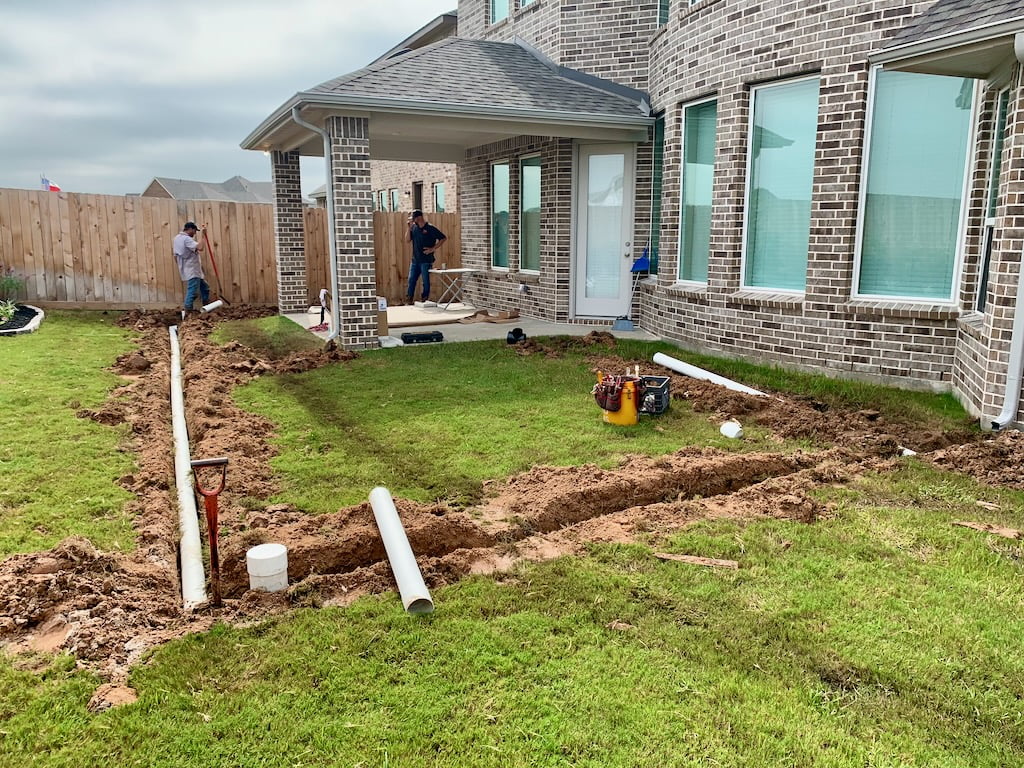


1. Mark the Trench: Use stakes and string to mark the path of the trench according to your planned design. Ensure that the trench follows the desired slope and avoids underground utilities.
2. Excavate the Trench: Dig the trench to the required depth and width. The depth will depend on the water table’s depth, the pipe’s slope, and the desired location for the drainage outlet.
3. Add Gravel or Rock: Place a layer of gravel or rock at the bottom of the trench, ensuring it’s level and evenly distributed. The depth of the gravel layer will vary based on the soil conditions and the size of the gravel used.
4. Lay the Perforated Pipe: Position the perforated pipe on top of the gravel layer, following the desired slope. Connect multiple sections of pipe using appropriate connectors or couplings.
5. Cover with Gravel or Rock: Fill the trench with additional gravel or rock, ensuring the pipe is surrounded. The depth of the gravel fill will depend on the desired cover and the size of the gravel used.
6. Install Geotextile Fabric: If desired, place a layer of geotextile fabric on top of the gravel or rock fill to prevent soil or debris from entering the system. Trim the fabric to fit the dimensions of the trench.
7. Backfill and Compact: Fill the remaining space in the trench with soil, ensuring proper compaction to prevent settling. Use a tamper or compactor to compact the soil in layers, ensuring stability and proper drainage.
8. Test the System: Once the French drain is installed, test the system by pouring water into the trench or using a hose to simulate rainfall. Observe the flow of water and check for any leaks or blockages.
Maintaining and Troubleshooting a French Drain
Proper maintenance is essential to ensure the continued effectiveness of your French drain system. While French drains are generally low-maintenance, occasional checks and minor upkeep can prevent potential issues. Here are some tips for maintaining and troubleshooting your French drain.
1. Inspect Regularly: Periodically inspect the French drain system to ensure that there are no obstructions, such as debris or plant roots, that could impede water flow. Check for any signs of standing water or pooling, as it could indicate a clogged pipe or inadequate drainage.
2. Clean the System: If you notice any blockages or reduced water flow, cleaning the French drain system may be necessary. Remove any debris or sediment accumulated in the perforated pipe or the gravel fill. A high-pressure water hose or a drain snake can be used to clear minor clogs.
3. Address Soil Settlement: Over time, soil settlement may occur around the French drain, leading to uneven or reduced drainage. If you notice signs of settling, such as depressions or pooling water, add additional soil to fill the gaps and ensure proper slope and water flow.
4. Monitor Downspouts: Ensure your gutter downspouts are correctly connected to the French drain system. Regularly clean and maintain your gutters to prevent debris from entering the French drain. Misdirected downspouts can overwhelm the French drain with excess water, leading to potential issues.
5. Seek Professional Help: If you encounter persistent drainage problems or suspect significant issues with your French drain system, it’s advisable to seek professional assistance. A drainage expert or landscaper can assess the situation and provide the necessary expertise to resolve the problem.
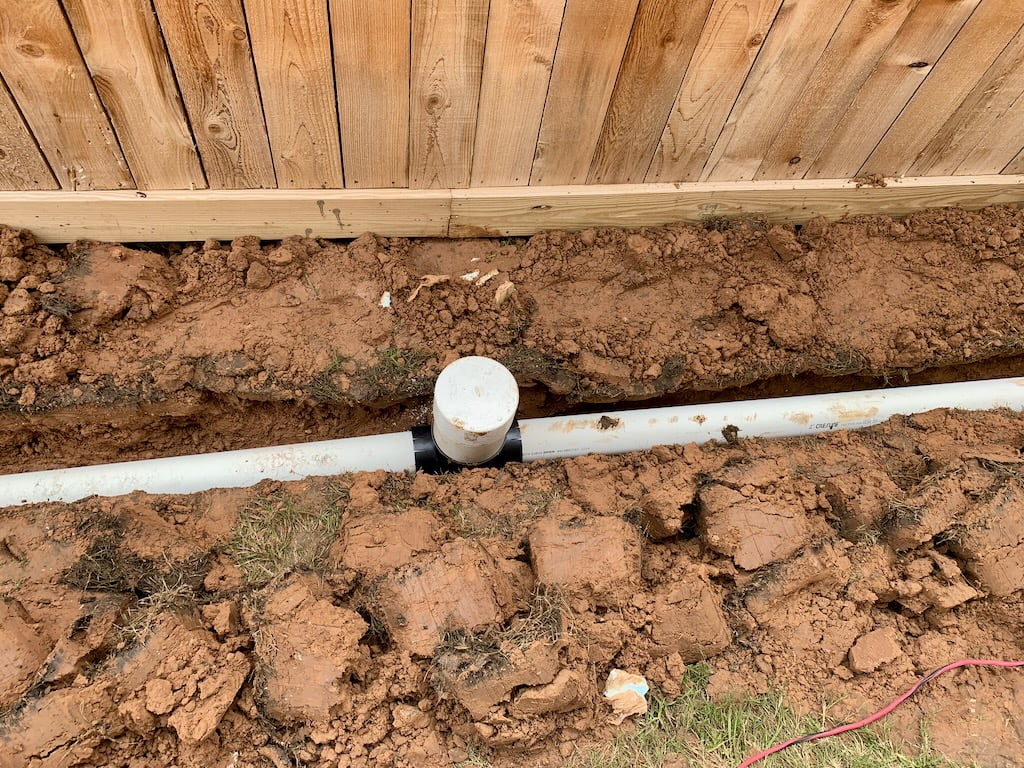

Alternatives to a French Drain
While French drains are highly effective for most drainage needs, there are alternative solutions that you may consider depending on your specific requirements. Here are a few alternatives to a French drain.
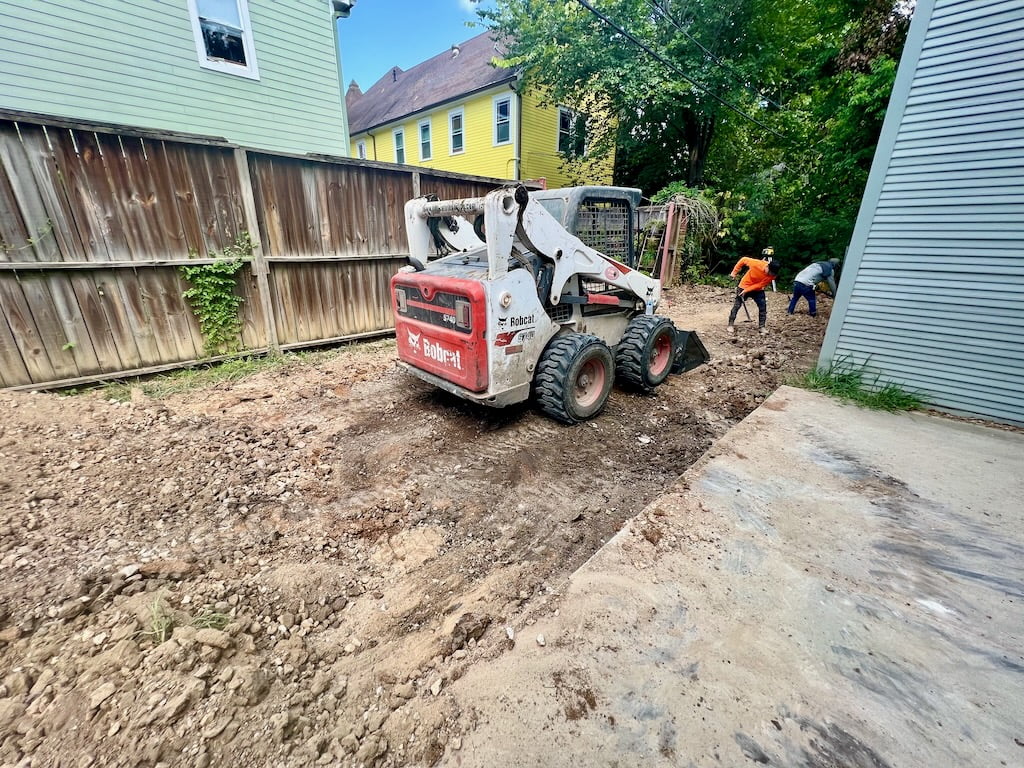
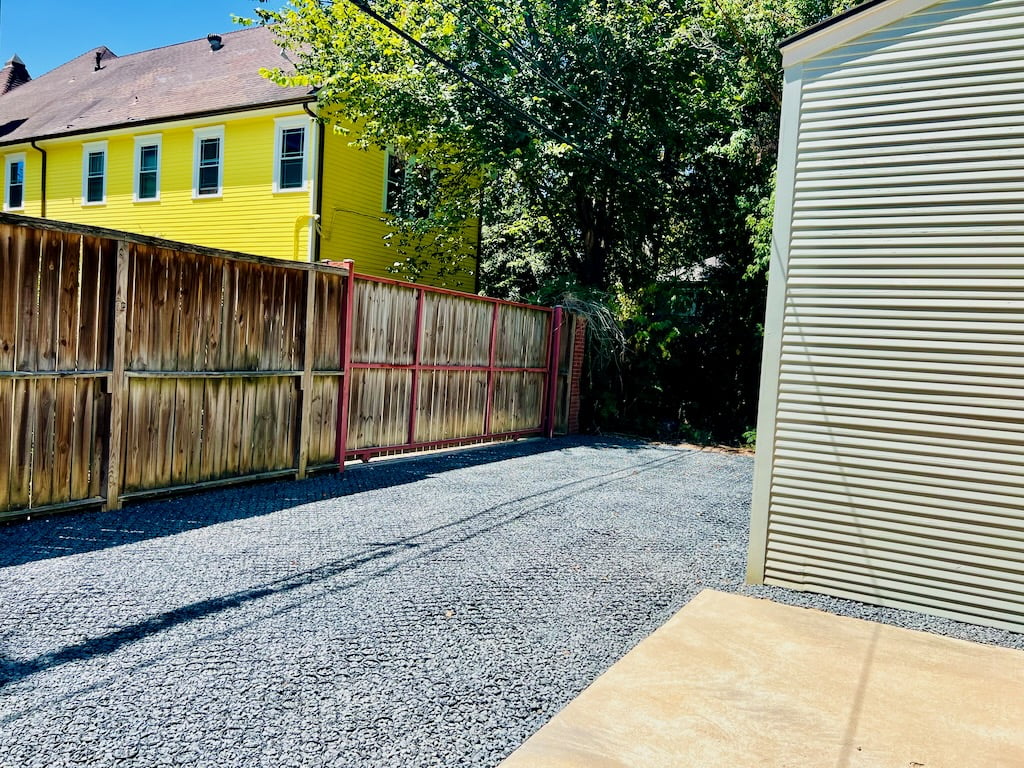
1. Dry Wells: Dry wells are underground chambers designed to collect and slowly disperse excess water into the surrounding soil. They can be an effective alternative to French drains, especially in areas with high water tables or limited space for drainage systems.
2. Swales: A swale is a shallow, vegetated channel designed to collect and redirect water. It utilizes the land’s natural slope to guide water away from problem areas. Swales can be an aesthetically pleasing alternative to French drains, particularly in landscaping projects.
3. Rain Gardens: Rain gardens are specially designed areas landscaped with plants that thrive in moist conditions. They effectively collect and absorb excess water, reducing the need for drainage systems. Rain gardens can be a visually appealing and environmentally friendly alternative to French drains.
The Essential Guide to Installing and Maintaining French Drains
Solving drainage problems is essential to protect your property and maintain a healthy environment. A French drain offers a practical and versatile solution for managing excess water. You can confidently tackle your drainage issues by understanding the components, benefits, and installation process of a French drain.
Remember to assess your drainage needs, plan the design accordingly, and consider professional assistance when needed. Proper maintenance and occasional troubleshooting will ensure the longevity and effectiveness of your French drain system. With a well-designed and adequately installed French drain, you can bid farewell to pooling water and welcome a beautiful dry landscape.
TGM Greater Houston Areas
- Greater Houston
- West University Place
- Heights
- River Oaks
- Memorial
- Bellaire
- Meyerland
- Pearland
- Sugar Land
- Pearland
- Sugar Land
- Richmond
- Rosenberg
- Katy
- The Woodlands
- Cypress
- Brookshire
- Fulshear & Beyond
Contact us to schedule a FREE consultation for our French Drain Installation Houston Services.

